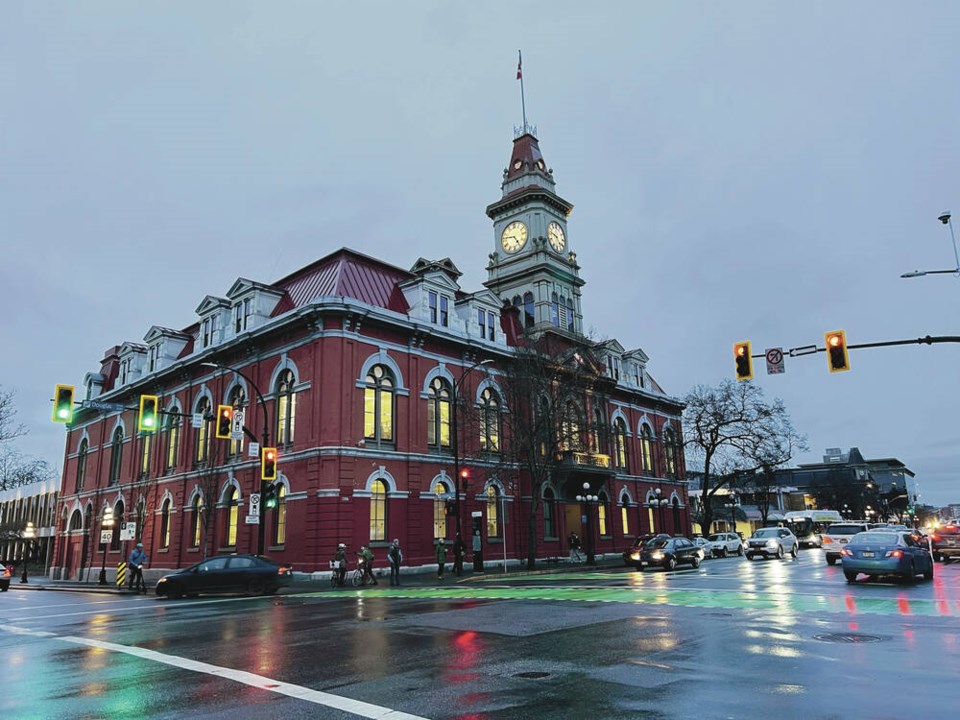A commentary by the vice-chair of Grumpy Taxpayer$ of Greater Victoria, a citizens’ advocacy group for municipal taxpayers.
For most people, a rainy-day account means a few hundred or thousand dollars tucked away in savings for occasional or unexpected expenses such as car repairs, a new roof or job loss.
But for local governments, the annual surplus can add up to hundreds of thousands for smaller jurisdictions and tens of millions of dollars for larger ones.
Taxpayers should be aware that data from the province shows that in 2021 the 13 municipalities in the capital region had a combined $222.7-million annual surplus.
Most have been fattening them up for a decade, since 2012 when collectively surpluses totalled about $80 million.
This year is a critical juncture for the region, with inflation surging and demands rising. It’s budget time and councils will soon need to decide about the tax burden for financially stressed residents, and those without even a “drizzle day fund.”
Councils have the option of using a surplus — or a fiscal stabilization fund if they have one — to moderate property tax increases in 2023. It remains to be seen how many local politicians will exercise that option.
Often surpluses go to reserves to help pay for pricey one-time capital infrastructure projects like fire halls, libraries or other community amenities. The surplus can also act as working capital or an emergency fund. But increasingly, the money is going to fund services they never used to provide such as housing, child care and support for the homeless.
B.C. municipalities have likely never been in better financial shape, according to a recent CBC report.
Provincial government data shows that in 2021 municipalities had a combined $3.1-billion surplus. That’s remarkable considering the collective surplus was $1.2 billion in 2012 and there have been two punishing pandemic years. And for the most part, inflation was historically low during that period.
Topping the surplus list in B.C. is 91įŁ┤┤ with $583 million, followed by $432 million in Burnaby.
So, which capital region municipalities accounted for most of the $222.7-million surplus in 2021?
Langford, ranked eighth in the province, put away almost $63 million.
Plans are in the works for various capital projects including a shared West Shore RCMP building and adding seating to Starlight Stadium.
Victoria, ninth ranked in B.C., had a surplus of almost $57 million.
In the 2022 budget alone, $154 million was invested in capital improvements to city infrastructure that people depend on. Still, its needs are substantial and include contributing toward a new central library, replacing the Crystal Pool and upgrading a lengthy backlog of substandard roads.
Saanich, the largest jurisdiction in the capital region, ranked 13th with $41 million in surplus.
It needs to spend as much as $200 million on a new Saanich Operations Centre. Unfortunately, it’s an extremely big expenditure at a time when borrowing rates, material and labour costs have spiked.
Not all jurisdictions have the same policies on what they can do with the surplus or provide the same services requiring a budget: Highlands and Metchosin have no municipal water or sewer services. Esquimalt and North Saanich receive substantial payments in lieu of taxes from the federal government for the military base and the airport. Sooke owns and operates its own sewer treatment plant.
It’s often said there’s a culture of municipal financial caution in British Columbia. Most municipalities now establish multi-year reserve funds to budget for various capital expenditures.
Our 162 municipalities, while largely autonomous, are creatures of the province who provide a few financial guardrails. The province also writes the underlying legislation governing their actions.
Even though they may borrow from the Municipal Finance Authority for capital projects at preferred rates, local government must balance the yearly operating budget.
There have been challenges.
In the early 1930s, five municipalities went into bankruptcy after suffering from the effects of the Depression. In the 1980s and 1990s, several communities had trouble balancing the books as a result of significant debt on infrastructure projects.
An insufficient surplus doesn’t allow for much flexibility when running taxpayers’ affairs. There may be good reasons to be cautious and to plump up the surplus for the next deluge.
Jurisdictions in the region set aside an average of $550 for each resident.
At what point should current taxpayers be helped during tough times with the taxes they already paid? Has provincial downloading forced municipalities to increase surpluses? Does the failure to share services force municipalities to increase surpluses?
Our analysis reveals that surpluses in 2021 ranged from $53 per capita in View Royal, $99 in the Highlands, and $132 in Sidney. Is that sufficient?
Langford socked away a healthy $1,331 per capita. Is that excessive?
Pick a rainy day and ask your council questions.



